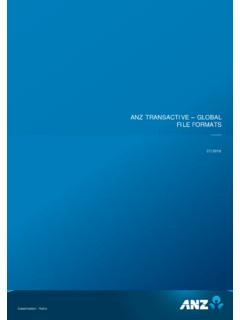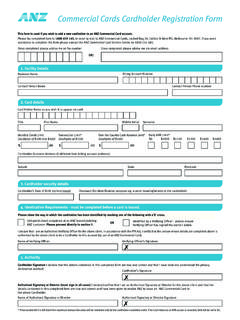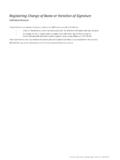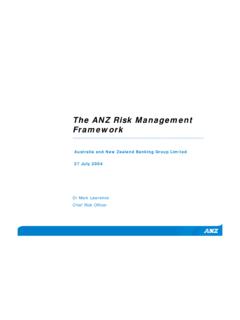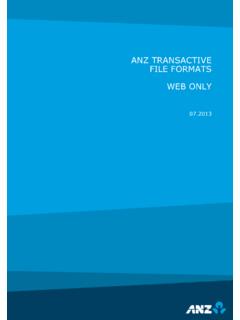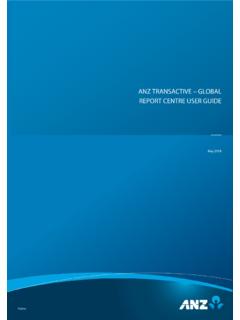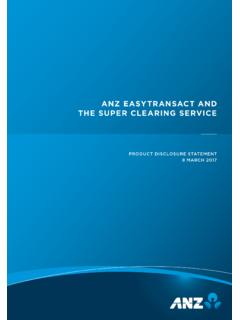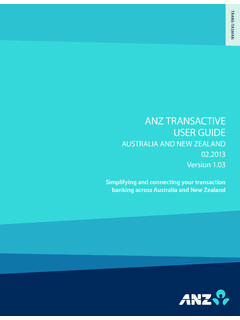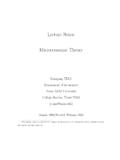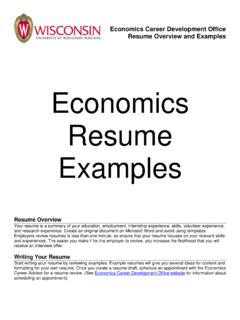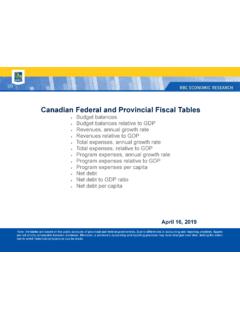Transcription of THE IMPORTANCE OF ACCURATE, RELIABLE AND TIMELY …
1 THE IMPORTANCE OF ACCURATE, RELIABLE AND TIMELY DATA Discussion Paper prepared for a Group of Eminent Australians working with the Indigenous community of the Goulburn Valley, Victoria to assist in independently measuring and analysing the success of initiatives designed to foster an equitable lifestyle for the region s Indigenous people Rumbalara Football Netball Club Shepparton, Victoria 19th May 2006 by Saul Eslake Chief Economist Australia & New Zealand Banking Group Ltd Accurate, RELIABLE and TIMELY information is vital to effective decision-making in almost every aspect of human endeavour, whether it be undertaken by individuals, community organizations, businesses or governments.
2 It is an essential component of any effort to persuade individuals, businesses or governments to make different decisions from the ones which they might make in the absence of particular pieces of information. And it is an integral part of any attempt to hold those who make decisions accountable for the consequences of the decisions which they make. In the absence of accurate, RELIABLE and TIMELY information, people and organizations will make bad decisions; they will be unable to help or persuade others to make better decisions; and no-one will be able to ascertain whether the decisions made by particular individuals or organizations were the best ones that could have been made at the time.
3 In short, information is a source of influence and power. That is why authoritarian governments seek to control access to information. Open, enlightened societies do not have Ministries of Information ; rather, they put in place procedures (such as freedom of information legislation) which attempt to prevent governments from restricting access to information. Not all information can be summarized in numerical forms (what are commonly called data). And data (such as weights, volumes, counts, and monetary values) cannot capture every aspect of individual, business or government activity.
4 But it is a truism that what gets measured gets valued ; and that what is not, or cannot be, measured tends to be ignored. The scope of what can be measured and enumerated in the form of data is widening almost continuously, not least as a result of advances in information technology. Two of the more obvious examples of this are in sport and health care. The variety and volume of data on athlete or player performance available to coaches, spectators, officials and players or athletes themselves has mushroomed in recent years, changing the way in which athletes and players are evaluated and trained.
5 Likewise the ability to measure and calibrate in much finer detail patients breathing, blood flow and other physiological and psychological responses has dramatically changed the way in which illnesses are treated. In the business sector it is becoming increasingly common some might say essential to extract and analyse minutely detailed information about customer behaviour, and about the profitability of individual products or services, points of sale and business units or even individual employees in pursuit of goals such as market share, productivity or profit.
6 Rising expectations including the growing expectation that those entrusted with scarce resources (such as public funds) have to demonstrate that they have used them wisely, for the purposes for which they were provided (that is, to be accountable for their use have also contributed to an increasing demand for data. From a development or poverty alleviation perspective, as the World Bank puts it, Statistics are crucial in the fight against poverty. They are the essential starting point, telling us how many people live below the poverty line in developing countries, how social, economic and environmental conditions differ throughout regions, what infrastructure, health and education services are lacking across the world.)
7 2 Statistics also tell us how successful policies designed to alleviate poverty are: whether maternal mortality has decreased through investment in health care; whether more children are attending school through increases in teacher training; whether fewer people are starving through the implementation of focussed agricultural projects for example. They reveal if our goals are achievable and if our strategies are on track. They alert us when we need to modify development programs and re-direct resources 1.
8 Accurate, RELIABLE and TIMELY statistics are similarly essential to programs aimed at alleviating poverty, deprivation and marginalisation of Indigenous communities, in Australia and elsewhere. The explicit exclusion of Indigenous inhabitants from statistical collections such as the Census prior to 1968 was, arguably, part of a broader pattern of exclusion of Indigenous communities from full participation in Australian life. And although the Australian Bureau of Statistics, in particular, has for many years sought assiduously to collect and publish statistical information relating to Australia s Indigenous inhabitants, explicitly seeking to involve Indigenous people and communities in the gathering and use of statistics2, there are numerous gaps in essential information particularly at the regional or local level and the accuracy and validity of the data is widely questioned.
9 Undermining its relevance to decision-making and program evaluation. As John Taylor of the Centre for Aboriginal Economic Policy Research at the Australian National University points out, there appears to be a growing mismatch between the broad direction that Indigenous affairs policy is taking focussing effort on partnerships with specific regions, communities and even families and the availability of information (except from the five-yearly census) at these detailed levels .. Today, what is framed by government as a new partnership approach exists in Indigenous affairs in Australia, but invariably the statistical basis for assessing its effectiveness is lacking 3.
10 The inadequacy of existing statistics regarding Indigenous populations extends to the most basic question of how may Indigenous people there are in particular locations. In Tasmania, for example, census statistics (which suggest that a higher proportion of that State s population is of Indigenous origin than of any other jurisdiction except the Northern Territory) are widely believed (including by prominent representatives of the Indigenous community) to over-state the number of persons of Aboriginal descent.
